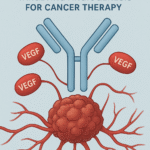Beyond the Fever: Paracetamol’s Pharmacology and Clinical Relevance
Introduction
Paracetamol, also known as acetaminophen in the United States and Canada, is one of the most widely used antipyretic and analgesic medications across the globe. Despite its extensive use and availability over the counter, its pharmacological intricacies, clinical applications, and toxicity profile are of critical importance to healthcare professionals. This article provides an in-depth overview of paracetamol, emphasizing its structure, pharmacodynamics, pharmacokinetics, clinical use, side effects, contraindications, and relevant safety guidelines.
1. Chemical Structure and Medicinal Chemistry
- IUPAC Name: N-(4-hydroxyphenyl)acetamide
- Molecular Formula: C₈H₉NO₂
- Molecular Weight: 151.16 g/mol
- Structure:

- Solubility: Slightly soluble in water; freely soluble in alcohol and acetone.
- Appearance: White, crystalline powder
- Functional Groups: Phenol group and amide group
Medicinal Chemistry Insight:
Paracetamol is structurally a para-aminophenol derivative. Its hydroxyl group contributes to its weak anti-inflammatory effect by avoiding complete cyclooxygenase (COX) inhibition in peripheral tissues. Unlike NSAIDs, it does not have a carboxylic acid group, reducing the risk of gastrointestinal irritation.
2. Pharmacological Actions
- Analgesic: Effective for mild to moderate pain.
- Antipyretic: Acts centrally on the hypothalamic thermoregulatory center.
- Anti-inflammatory: Negligible to no significant anti-inflammatory action.
Paracetamol is classified as a non-opioid analgesic with minimal anti-inflammatory properties, making it a safer alternative to NSAIDs for patients at risk of peptic ulcer disease or bleeding disorders.
3. Mechanism of Action
The precise mechanism is not entirely understood, but the following pathways have been proposed:
- Central COX Inhibition:
Paracetamol inhibits prostaglandin synthesis in the central nervous system (CNS), especially COX-2 isoform, resulting in antipyresis and analgesia. - Inhibition of Peroxidase Function of COX Enzyme:
It reduces the oxidized form of COX enzymes, decreasing prostaglandin production in the CNS. - Effect on Serotonergic Pathways:
Modulation of descending serotonergic pathways may contribute to its analgesic effect. - Endocannabinoid System Modulation:
Paracetamol’s metabolite AM404 may inhibit reuptake of endogenous cannabinoids, enhancing analgesia.
4. Pharmacokinetics
| Parameter | Description |
|---|---|
| Absorption | Rapid and complete from the gastrointestinal tract |
| Onset of Action | 30 minutes |
| Peak Plasma Time | 1–2 hours |
| Plasma Half-Life | 2–4 hours |
| Protein Binding | 10–25% |
| Metabolism | Primarily hepatic via glucuronidation and sulfation. A small fraction is oxidized via CYP2E1 to NAPQI |
| Excretion | Renal (as conjugates) |
Clinical Note: Hepatic metabolism via CYP450 (especially CYP2E1) produces N-acetyl-p-benzoquinone imine (NAPQI), a toxic metabolite detoxified by glutathione. Overdose leads to glutathione depletion and hepatotoxicity.
5. Therapeutic Uses
| Indication | Notes |
|---|---|
| Fever | Preferred in pediatric and adult populations due to fewer GI effects |
| Headache | Including tension-type and migraine (as adjunct) |
| Musculoskeletal Pain | Osteoarthritis, back pain, etc. |
| Postoperative Pain | Especially in combination with opioids |
| Toothache | First-line therapy |
| Cold and Flu Relief | Often used in combination OTC medications |
6. Dosage and Administration
Adults:
- Oral: 500 mg to 1000 mg every 4–6 hours
- Maximum Daily Dose:
- OTC use: 3000 mg/day
- Prescribed: Up to 4000 mg/day (with caution)
Pediatrics:
- Oral Dose: 10–15 mg/kg every 4–6 hours
- Maximum Daily Dose: Not to exceed 75 mg/kg/day
Intravenous Paracetamol:
- Adults: 1 g every 6 hours or 650 mg every 4 hours
- Pediatrics: 15 mg/kg every 6 hours (max 60 mg/kg/day)
Dosing Adjustments:
- Required in hepatic impairment, chronic alcohol use, or malnutrition.
7. Side Effects
Though generally well tolerated, paracetamol may cause:
Common:
- Nausea
- Vomiting
- Abdominal discomfort
- Rash
Rare but Serious:
- Hepatotoxicity (especially in overdose)
- Nephrotoxicity (prolonged high doses)
- Anemia
- Thrombocytopenia
- Stevens-Johnson syndrome (SJS)
- Toxic epidermal necrolysis (TEN)
8. Contraindications
- Known hypersensitivity to paracetamol or its excipients
- Severe hepatic impairment or active liver disease
- Chronic alcohol abuse
- Severe renal impairment (relative contraindication)
- Concomitant use with other hepatotoxic drugs
9. Drug Interactions
| Interacting Drug | Effect |
|---|---|
| Warfarin | Increased INR with prolonged use |
| Phenytoin, Carbamazepine | Increased metabolism, reduced efficacy |
| Isoniazid | Increased risk of hepatotoxicity |
| Alcohol | Induces CYP2E1, increasing NAPQI formation |
| Cholestyramine | Delays absorption |
| Metoclopramide | Accelerates absorption |
10. Overdose and Toxicity
Toxic Dose:
- Adults: >7.5 g–10 g in a single dose
- Children: >150 mg/kg in 24 hours
Clinical Features:
- Stage 1 (0–24 hrs): Nausea, vomiting, malaise
- Stage 2 (24–72 hrs): Hepatic enzyme elevation, RUQ pain
- Stage 3 (72–96 hrs): Fulminant hepatic failure
- Stage 4 (4–14 days): Recovery or death
Antidote:
- N-acetylcysteine (NAC): Most effective within 8–10 hours
11. Special Populations
- Pregnancy: Category B; safe when used within recommended doses.
- Lactation: Considered safe.
- Elderly: No dose adjustment needed unless hepatic/renal impairment.
12. Brand Names
- India: Dolo, Crocin, Calpol, Metacin, Pacimol
- USA/Canada: Tylenol, Tempra
- Others: Panadol, Paracip
FAQs
1. What is paracetamol used for in clinical practice?
Paracetamol is commonly used to relieve mild to moderate pain and reduce fever. It is also used postoperatively and in viral infections where NSAIDs are contraindicated.
2. Is paracetamol safe in pregnancy and breastfeeding?
Yes, paracetamol is considered safe in pregnancy and lactation when used at recommended doses.
3. What is the maximum safe dose of paracetamol in adults?
The maximum daily dose should not exceed 4000 mg. For OTC use, it is typically limited to 3000 mg/day.
4. How does paracetamol differ from ibuprofen?
Paracetamol lacks significant anti-inflammatory action and has fewer gastrointestinal side effects than ibuprofen, making it safer for certain populations.
5. What are the signs of paracetamol overdose?
Early symptoms include nausea, vomiting, and malaise. Later signs include jaundice, elevated liver enzymes, and potentially liver failure.
6. Can paracetamol be taken with other medications?
Yes, but caution is needed with anticoagulants, enzyme inducers, and other hepatotoxic drugs. Always assess for drug interactions.
7. What is N-acetylcysteine and how does it treat paracetamol toxicity?
N-acetylcysteine replenishes glutathione stores in the liver, helping detoxify the harmful metabolite NAPQI and prevent liver damage in paracetamol overdose.
For more regular updates you can visit our social media accounts,
Instagram: Follow us
Facebook: Follow us
WhatsApp: Join us
Telegram: Join us



